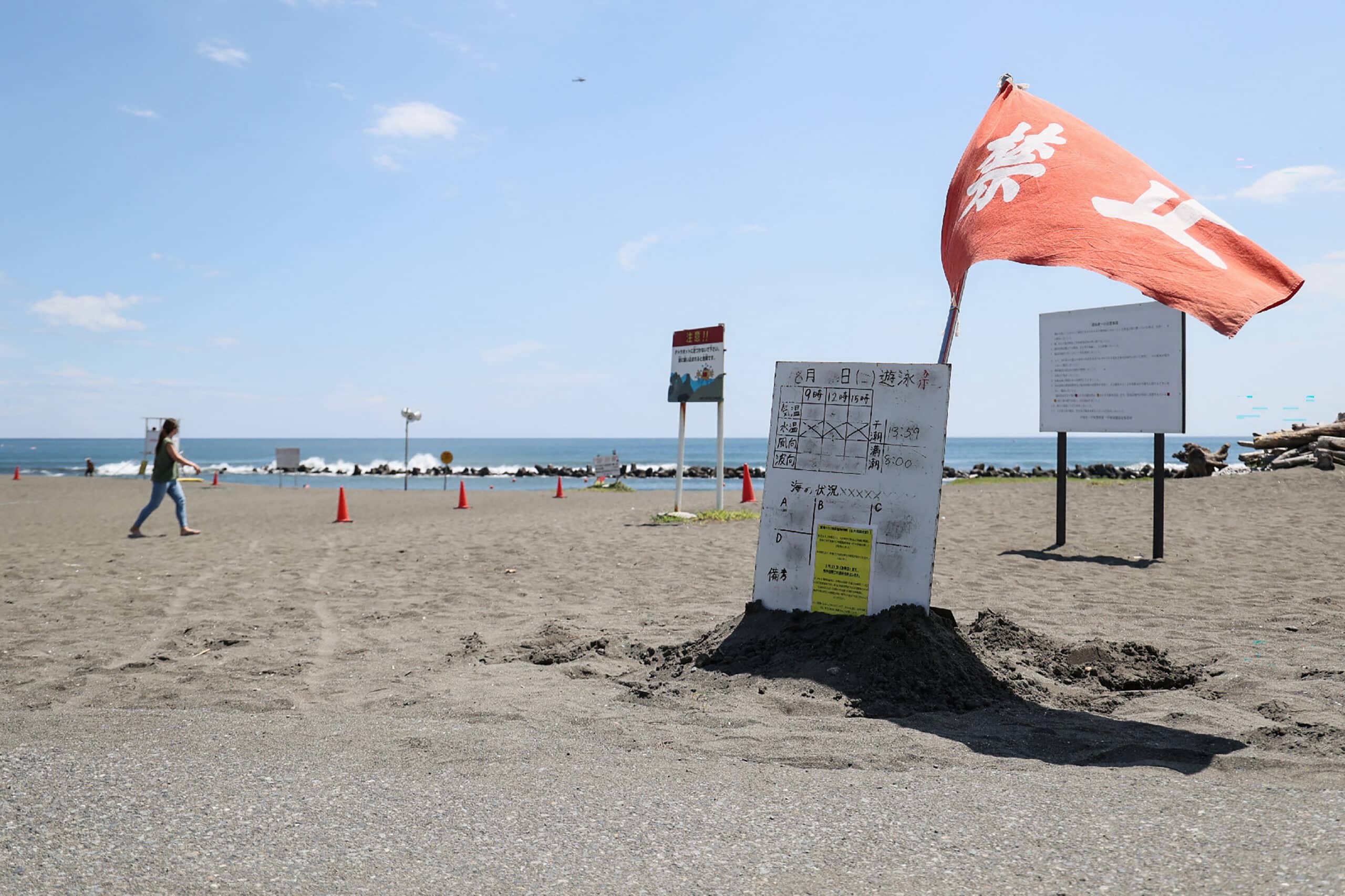Japan set to lift ‘megaquake’ warning

A red flag flutters in the wind as authorities warn against swimming at Shonan Bellmare Hiratsuka Beach Park in Hiratsuka, Kanagawa prefecture, southwest of Tokyo on August 10, 2024, after the city took measures in response to the government’s announcement of a “major earthquake warning”. JIJI Press/Agence France-Presse
TOKYO — Japan will lift its week-old “megaquake” warning later Thursday if there is no further major seismic activity, the disaster management minister said.
The alert last week prompted thousands of Japanese to cancel holidays and stock up on essentials, leading to bare shelves in some stores.
“If no particular change in seismic activity or crustal deformation is observed, at 17:00 (0800 GMT) today, the government will end the special call for attention,” said Yoshifumi Matsumura, minister of state for disaster management.
READ: Japan ‘megaquake’ advisory after tremor injures eight
“The possibility of a major earthquake has not been eliminated,” he said, urging citizens to regularly check their preparedness “for the major earthquake that is expected”.
Last Thursday Japan’s weather agency said the likelihood of such an event was “higher than normal” after a magnitude 7.1 jolt earlier in the day that injured 14 people.
That was a particular kind of tremor called a subduction megathrust quake, which in the past have occurred in pairs and can unleash colossal tsunamis.
READ: EXPLAINER: Japan’s ‘megaquake’ warning
The advisory concerned the Nankai Trough “subduction zone” between two tectonic plates in the Pacific Ocean, where massive earthquakes have hit in the past.
The 800-kilometer (500-mile) undersea trough runs from Shizuoka, up the Pacific coast from the Tokyo region — the world’s biggest urban area — to the southern tip of Kyushu island.
In 1707, all segments of the Nankai Trough ruptured at once, unleashing an earthquake that remains the nation’s second-most powerful on record.
That quake — which also triggered the last eruption of Mount Fuji — was followed by two powerful Nankai megathrusts in 1854, and then a pair in 1944 and 1946.
Japan’s government has previously said the next magnitude 8-9 megaquake along the Nankai Trough has a roughly 70 percent probability of striking within the next 30 years.
In the worst-case scenario 300,000 lives could be lost, experts estimate, with some engineers saying the damage could reach $13 trillion with infrastructure wiped out.
The Japan Meteorological Association (JMA) warning was the first under new rules drawn up after a 2011 quake, tsunami and nuclear disaster that left around 18,500 people dead or missing.
The 2011 tsunami sent three reactors into meltdown at the Fukushima nuclear plant, causing Japan’s worst post-war catastrophe and the world’s most serious nuclear accident since Chernobyl.